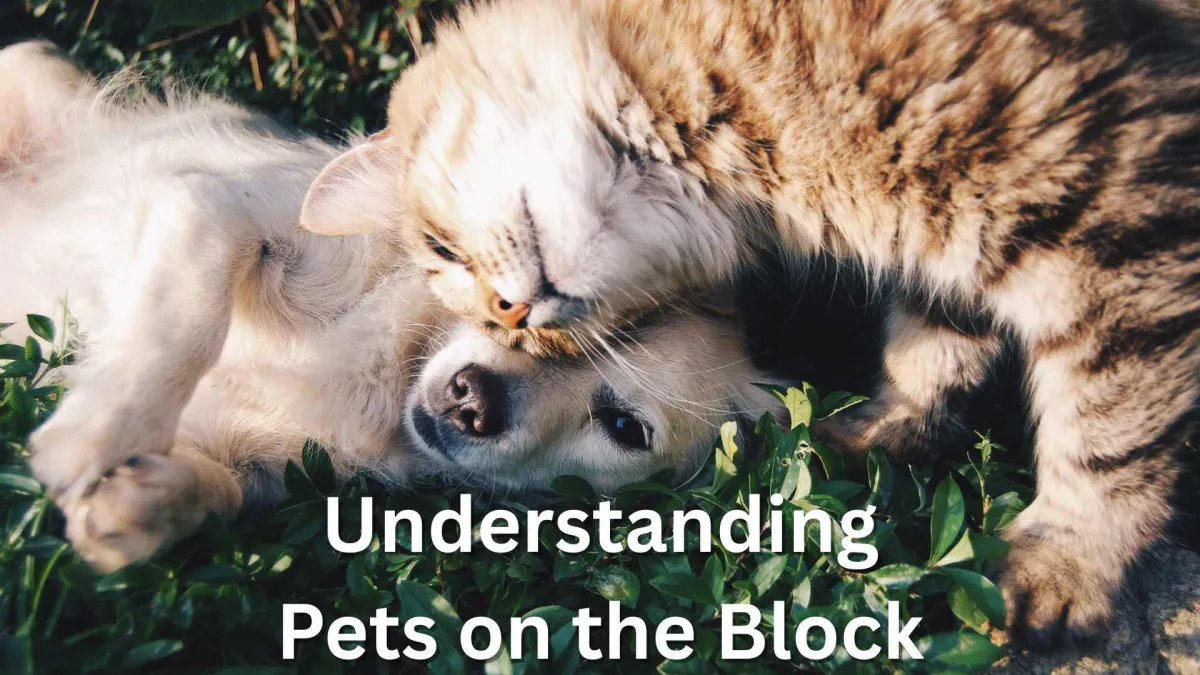Understanding Pets on the Block

What rural life means for your companion animals
When people move to the country, they often bring their pets with them - dogs, cats, rabbits, and the odd parrot or guinea pig. But rural life is very different from life in town, and pets that once roamed a fenced backyard may face entirely new challenges on a lifestyle block.
This guide outlines what changes when pets become part of a rural property, how to keep them safe, and what responsibilities come with living alongside livestock, wildlife, and neighbours.
Adjusting to Rural Life
The biggest difference for most pets is freedom, and that freedom brings risk. Open gates, unfenced paddocks, roads, waterways, machinery, livestock, and wildlife all pose dangers that town pets may never have encountered.
Many animals adjust well, especially if the transition is managed carefully. But some will need time, retraining, or even containment systems to stay safe.
Dogs on the Block
Rural dogs often get into trouble when their owners assume they can roam. Wandering dogs may:
Worry or injure livestock
Chase vehicles
Harass wildlife
Eat baits or poisons left out for pests
Get injured in fences or machinery
In New Zealand, dog owners are legally responsible for keeping dogs under control. If your dog is caught worrying stock, the consequences can be serious, including fines or destruction of the dog.
Best practice is to:
Contain your dog in a secure area when unsupervised
Use boundary training or fencing if needed
Walk dogs on lead around stock
Desensitise them gradually to livestock, poultry, and working machinery
Even friendly dogs can cause chaos with stock, so caution is essential.
Cats in the Country
Cats tend to adapt well to rural life, but they present challenges too. Hunting is a natural instinct, and cats in the countryside may catch birds, reptiles, or even young rabbits or hares.
To reduce the risk:
Keep cats indoors at night
Use collar bells or other deterrents
Consider desexing to reduce wandering
Provide enrichment and hunting alternatives
Rural cats are also more exposed to poisoning. Rat bait, antifreeze, and chemicals are common hazards. Make sure these are stored and used safely, and know the signs of toxicity.
Other Pets in a Rural Setting
Smaller pets like rabbits, guinea pigs, or pet poultry need added protection. Predators such as dogs, wild cats, ferrets, or stoats are more active in rural areas.
Secure housing, covered runs, and good hygiene are essential.
Vehicles, Toxins, and Other Hazards
Country properties often have driveways, quad bikes, tractors, and visitors arriving. Pets can easily be injured by vehicles or heavy equipment.Other hazards include:
Water troughs or tanks that small pets may fall into
Electric fences
Open compost heaps or animal feed
Tools and machinery
A well-trained pet is your best safety measure. Teach recall, boundary respect, and discourage scavenging.
Livestock and Pets: Getting Along
Dogs and cats may share space with cattle, sheep, goats, or horses. Some animals will tolerate them, others will chase, stomp, or flee.
To keep everyone safe:
Never allow dogs to run at large in stock paddocks
Keep cats out of feed stores or milking areas
Supervise all early interactions
Train dogs to avoid poultry and penned animals
Watch for behavioural signs in stock: a lowered head, bunched body, or aggressive stance may mean trouble
Health, Vet Care, and Emergencies
Rural vets are often farther away, so prevention matters. Make sure your pets:
Are vaccinated, wormed, and flea treated
Are microchipped and registered
Have shelter, especially during storms or heat
Can be confined if needed during fire, flood, or disease outbreak
Keep a pet first aid kit, your vet’s number, and a plan in place for emergencies. In rural areas, you may need to act quickly if help is far away.
What This Means on Your Block
Living on a block means thinking differently about pet care. Your dog may no longer be able to roam. Your cat may need a curfew. Your chickens might need to sleep in a steel pen, not just a coop. The days of free-ranging everything may be over, but the rewards are still real.
With care and planning, pets can thrive on a rural property. They provide company, connection, and sometimes protection. But they also need protection in return.
If you’re bringing a pet to your block, or considering getting one, ask yourself:
Can I keep them safely confined or supervised?
Will they pose a risk to stock or wildlife?
What extra care will they need in this environment?
The answers will help you shape a rural life that works for both people and pets.
More Resources
If you're planning to keep livestock on your block you can find help here:
What You Need to Know to Keep Livestock – Whatever species, you need to know the basics.
Whatever the species we have it covered.
Understanding Goats - Fun, natural comedians but can be tricky to keep healthy.
Understanding Pigs - Very intelligent, full of character.
Understanding Alpaca - Their South American heritage makes their needs unique.
Understanding Sheep – Classic kiwi animal - and lambs are adorable!
Understanding Cattle – Popular on blocks and easy to manage with the right knowledge.
Understanding Poultry - Surprisingly individual - every one is unique.
Understanding Horses & Other Equids - If you're a horse lover, there's nothing like them.
Back to Livestock & Pets
Support & Legal
Get Rural Tips & Seasonal Updates
Subscribe to the LSB monthly newsletter.
© 2025 Lifestyleblock.co.nz | LSB Ltd Proudly off-grid and NZ-owned

